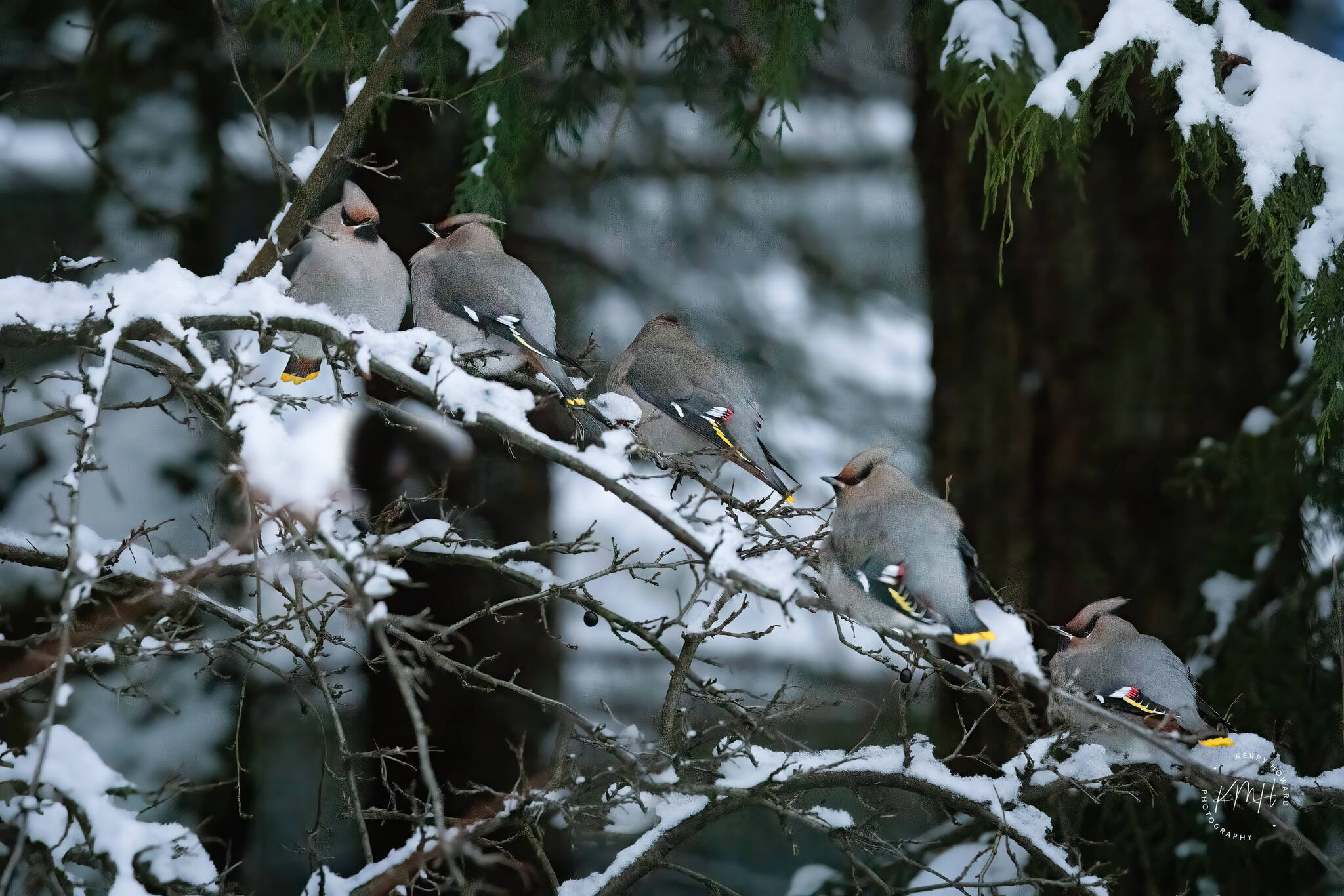Winter is an odd time of year here. Sometimes it rains, seemingly forever; sometimes a low, gray cloud parks itself over us for days; sometimes it’s absurdly warm but at other times it’s quite cold and the little bit of wet snow on the ground turns rock-hard. Even expert forecasters don’t always get it right. When we’re lucky, there’s a good fall of deep, soft snow that makes skiers smile.
One such good snowfall at the end of February sent me and a couple of friends out on snowshoes, plonking around the big meadow near the Eagle Valley Center. That meadow often offers a fine winter record of animal activity on the snow, but on this day we didn’t even see the usual squirrel and porcupine tracks. However, we did see three long shrew trails, way out in the open. The deep snow had a very light crust on top, just enough to support a shrew without much body drag. This was long-distance travel, over many meters—looking for what? Near the far end of the meadow, we spotted the tracks of a medium-size canid that had poked around under some conifer branches and gone off in another direction. Nowhere on our tour had we seen any doggy tracks associated with the quite fresh human boot tracks, so we cheerfully decided that a coyote had been there (maybe).
Bird observation in winter is just as variable as the weather. Sometimes we see quite a few loons, of two different species, but no luck (for me, anyway) this year. Snow buntings and Lapland longspurs show up on the wide, grassy meadows sometimes. Magpies arrive from the Interior, but this year I haven’t seen as many as usual. Pine grosbeaks come too, but I’ve seen none at all, so far. Nor have I seen the occasional slate-colored form of the junco, which comes from the Interior. And where are the siskins and the crossbills?
Favorite occasional winter arrivals are small flocks of the elegant Bohemian waxwings, which sometimes can be seen foraging on mountain ash fruits. They get part of their name from little red blobs of ‘wax’ on the tips of their secondary wing feathers; the red blobs are bigger on older birds and (along with other features) may influence mating success. They are obviously not strictly Bohemian at all, being distributed over both North America and Eurasia, nesting in boreal forest regions and moving somewhat south (including to Bohemia) for the winter. They feed largely on sugary fruits, with additions from insects especially in the breeding season, and sometimes buds, flowers, snails, or other oddments. There has been little intensive research into their ecology.
Unlike the ever-changing winter weather and the often-unpredictable winter bird populations, trees stand there all year round. But they do their own kinds of changing.
The leaves of deciduous trees avoid winter problems by dropping off the trees. But conifer needles face cold temperatures, sometimes wind, and lethal water shortages if the ground freezes. When the ground is thoroughly frozen, the needles receive no water and cannot conduct photosynthesis; then too much sunlight can be deadly, leading to the accumulation of free-radicals and other damaging particles. Needles have some built-in features that provide some protection, such as a waxy cuticle and a small surface area that conserve water and resin content that is resistant to cold. In addition, they may increase photo-protective carotenoids, and they have a lower metabolism at low temperatures and an ability to continue photosynthesis at a reduced level.
If, despite that first line of defense, ice crystals form in the cells, they can damage critical organelles inside the cell: the nucleus with genetic instructions, the mitochondria that control metabolism, the chloroplasts that house chlorophyll that captures light to initiate photosynthesis, and other miniscule particles that carry out normal procedures. The crystals also can ruin the cell membrane, exposing those organelles to damage and destroying the cells.
Activated by short day-length and cold temperatures, there’s a second line of defense at the cellular level: cells make some changes to reduce that potential damage. Cell membranes become more pliable, as saturated fatty acids are replaced by un-saturated fatty acids, which freeze at lower temperatures. Some cellular water is moved out of the cell to the interstitial space between cells where, if it freezes, the crystals cause less damage. Furthermore, as interstitial water freezes, it releases a tiny amount of heat, which may help keep the cellular fluids from freezing. Inside the cells, starches are converted to sugars, lowering the freezing point. Lipid concentrations may increase too, and there can be some particular proteins that resist freezing.
Come spring, with warming temperatures and longer days, if the cells remained undamaged, those cellular changes are reversed, restoring the cells to normal conditions. Metabolic rates rise to normal and photosynthesis is again conducted at the usual rates. That’s an impressive array of seasonal adjustment in a seemingly simple thing like a conifer needle.
• Mary F. Willson is a retired professor of ecology. “On The Trails” is a weekly column that appears every Wednesday.

